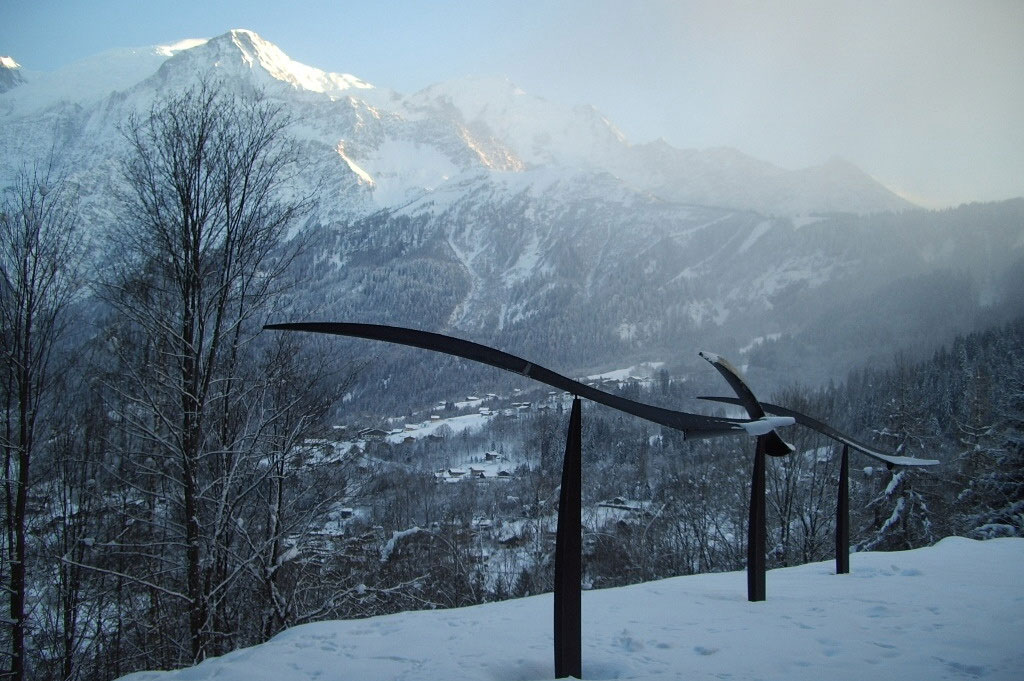Les Houches School of Physics has been welcoming physicists from around the world since 1951. The School has seen the biggest names in modern physics training young researchers at the start of their careers, some of whom have since won Nobel prizes for physics. The school perpetuates a tradition of excellence, while continuing to adapt to the evolutions of science.
The origins of the school
Les Houches School of Physics was founded in 1951 by a young French physicist, Cécile DeWitt-Morette. She wanted to help to rebuild her country, which, like so many others in the wake of the war, was lagging seriously behind in the teaching and practice of modern physics.
The dynamic and visionary Cécile DeWitt-Morette succeeded in building a school, with the few resources available, to which leading world specialists would come to share their knowledge with groups of around thirty students from different countries (mostly France and other European countries, but not only). The setting is idyllic, lying above the Chamonix valley, in full view of the Mont-Blanc mountains. However, back then, living conditions were very rudimentary: the sessions lasted eight weeks (the two months of the university summer holidays), staying in mountain chalets will no facilities, a few kilometres from Les Houches village.
Immediate recognition
History relates that the first class, on quantum mechanics, was held in 1951 by Léon van Hove. The school quickly attracted interest from the biggest names in physics, including Enrico Fermi, Wolfgang Pauli, Murray Gell-Mann and John Bardeen, to name but a few. Cécile DeWitt-Morette also promoted unknown youngsters: in 1951, Walter Kohn (1998 Nobel prize for chemistry), aged 28, gave a class on solid state physics. Philippe Nozières was asked to organise a session on the N-body problem in 1958, when he was just 26 years old. The school’s students have included Alfred Kastler, Pierre-Gilles de Gennes, Georges Charpak, Claude Cohen-Tannoudji and Serge Haroche future winners of the Nobel prize for physics, and later on, mathematician Alain Connes (Fields medal 1982). All have had the opportunity to testify their immense gratitude to the school.
> Nobel prizes who came to les Houches
> Famous professors and students who came to les Houches
> Historic documents
During the 1950s and 60s, Les Houches School of Physics had a considerable impact on the development of top level physics in France and beyond. Its operational concept has been copied throughout the world. NATO, through Norman Ramsey (See this NATO's document), very quickly offered its support to the school, and launched its Advanced Study Institutes in 1958, based on the model of Les Houches.
The school today
The school has changed over the years, although some of its traditions have been preserved and it continues to attract world leaders in the field. The main events of the year remain the two summer schools (in-depth, month-long courses in July and August on innovative themes). These form a kind of post-doctoral school, which has remained something of a trademark for Les Houches. Various courses and shorter, more specialised conferences are organised throughout the year in the “Physics Centre”. Some are intended for all researchers (from beginners to experts) while others are primarily designed for post-graduate students (doctoral courses). Aside from the educational aspects, these meetings also enable the development of scientific collaborations. Effective professional and social networks are frequent by-products of Les Houches schools.
The school has kept up with the evolution of science, opening up to interfaces of physics with mathematics, Earth sciences, chemistry, and biology. The interactions of Physics with these disciplines are actually very often at the core of the topics investigated nowadays in Les Houches.
Three major milestones
1977: creation of the "Physics Centre"
More specialised, shorter conferences are now organised all year round, with the specific ambition of promoting more original themes, bringing together physicists from different cultures and scientists from different disciplines.
1988: creation of the "Pre-doctoral School"
These two-week schools offer general introductory courses in a given field for young researchers entering into their PhD theses or during their PhD. The aim is to expose quickly the students to the State of the Art in a given discipline in order to foster their own scientific productivity.
2017: creation of the Unite Mixte de Recherche "Ecole de Physique des Houches"
This new status recognizes the School as a full-fledged component of national research centers such as CNRS and CEA as well as Grenoble-Alpes University, Grenoble INP and ENS-Lyon.

